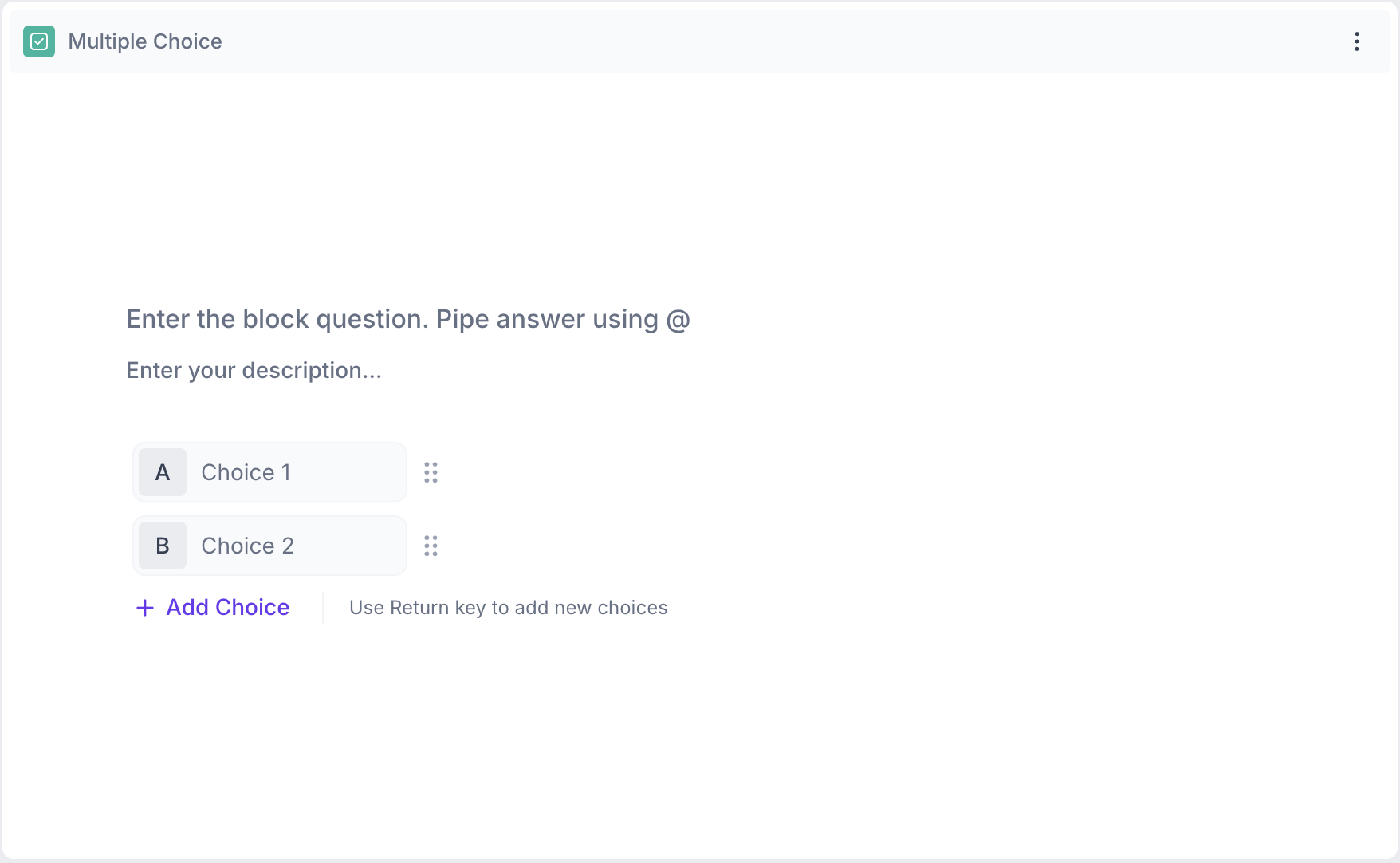Types of Basic Question Blocks in Decode
Overview
In Decode, Basic Blocks let you ask clear, structured questions that help capture consumer opinions, preferences and behaviors. They’re simple to use, yet powerful enough to generate insights that drive decisions.
Whether you're testing a new product, exploring brand perception or tracking customer satisfaction, Basic Blocks help you ask the right questions and get the answers you need.
Below are the different Basic Block question types you can add to your study, along with common use cases to help you choose the right one.
1. Context Block: A Context Screen is a dedicated page shown to respondents before they begin answering questions in a study. It provides essential background information, instructions, or context to help respondents understand the purpose of the study and what is expected of them.
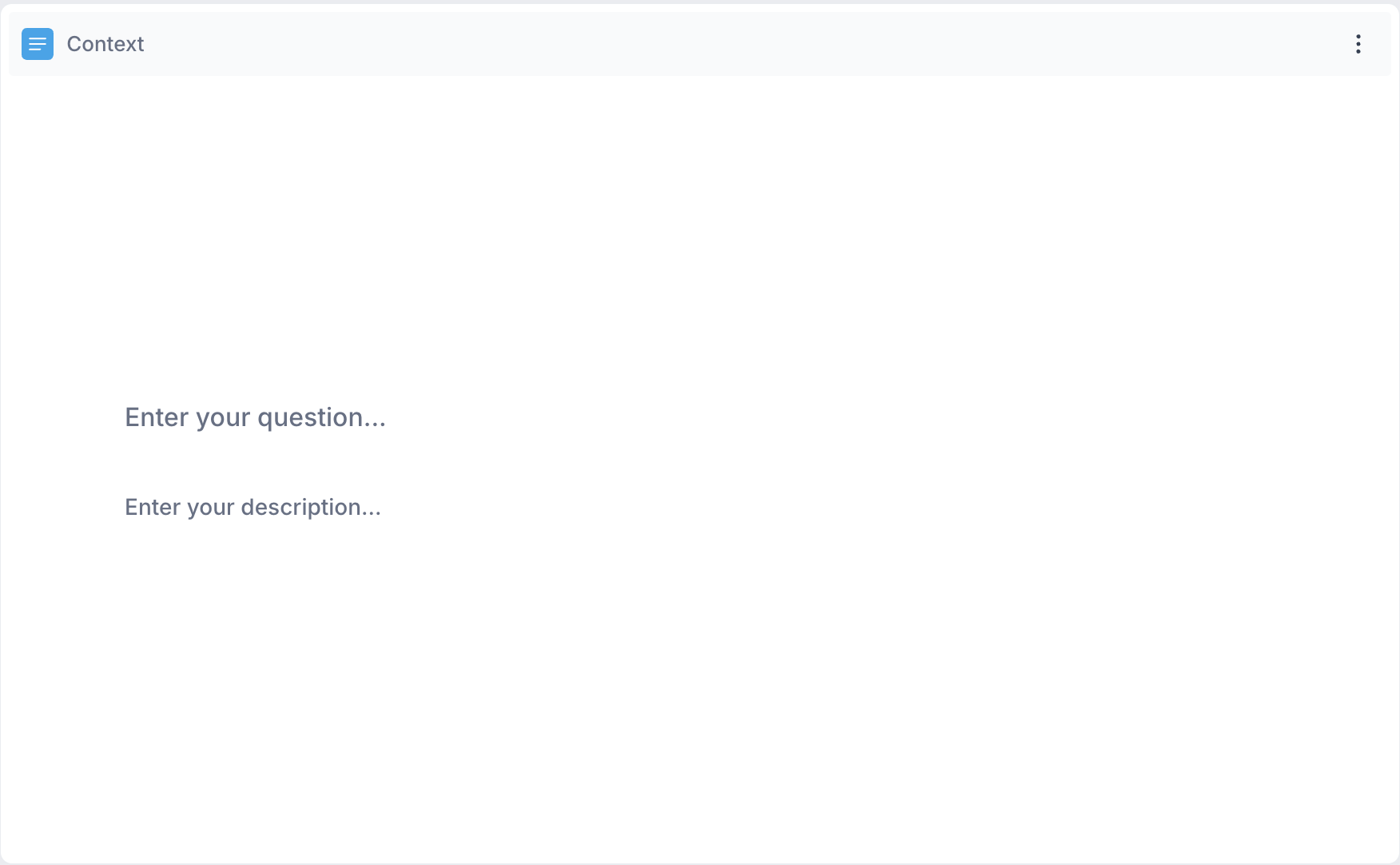
2. Date Time 📅: In this question type, respondents can select a date and time using the calendar and time picker, or manually enter their response in the input field.
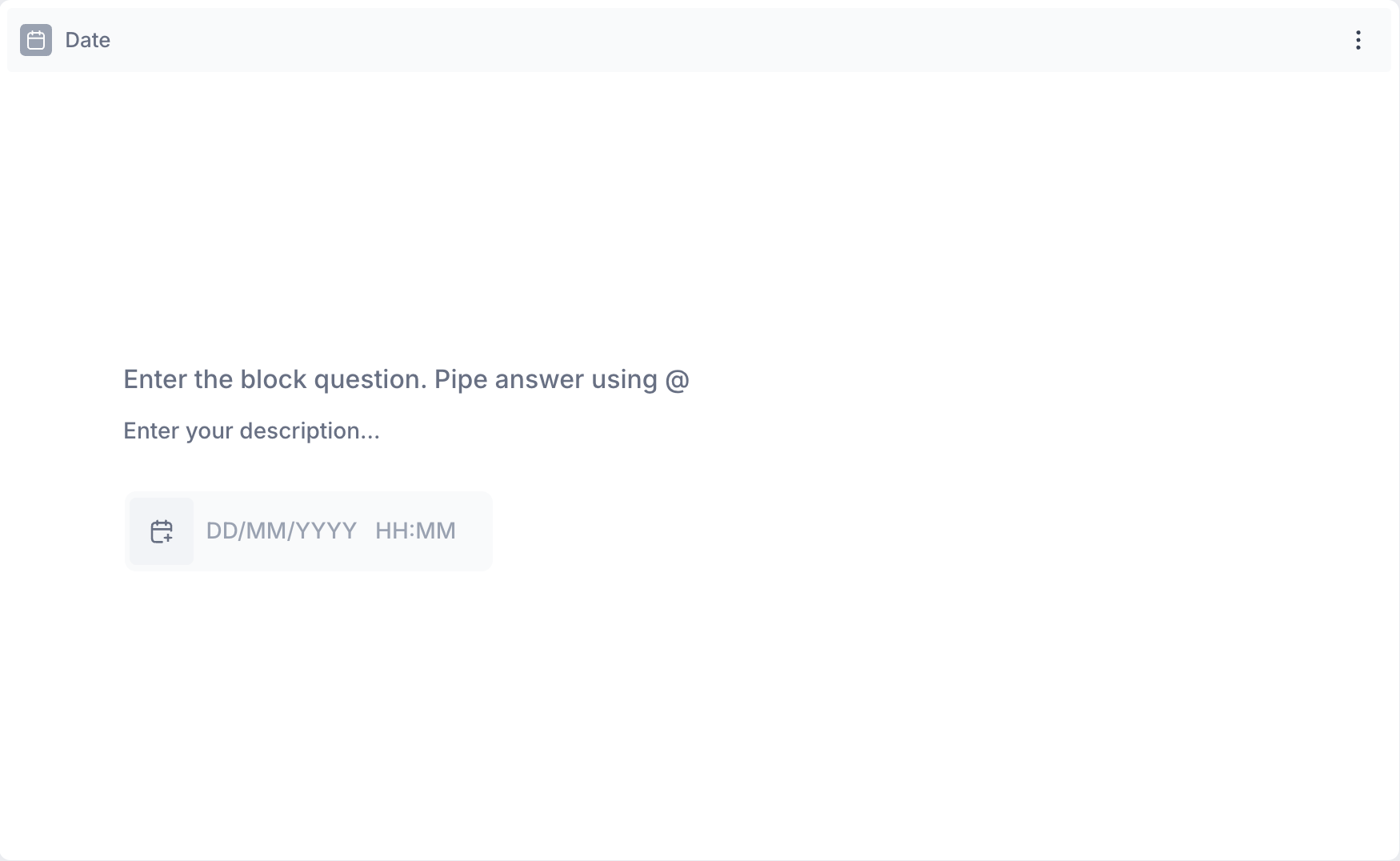
Example Use Cases:
- When did you last purchase this product?
- What date did you visit the store?
- At what time do you typically use this product?
3. Dropdown Question 🔽: In this question type, respondents can select one or more options from a dropdown list, depending on how the question is configured. By default, only one option can be selected, but multi-select can be enabled through the question properties. This is commonly used in consumer research to capture preferences, behaviors, or demographic information.
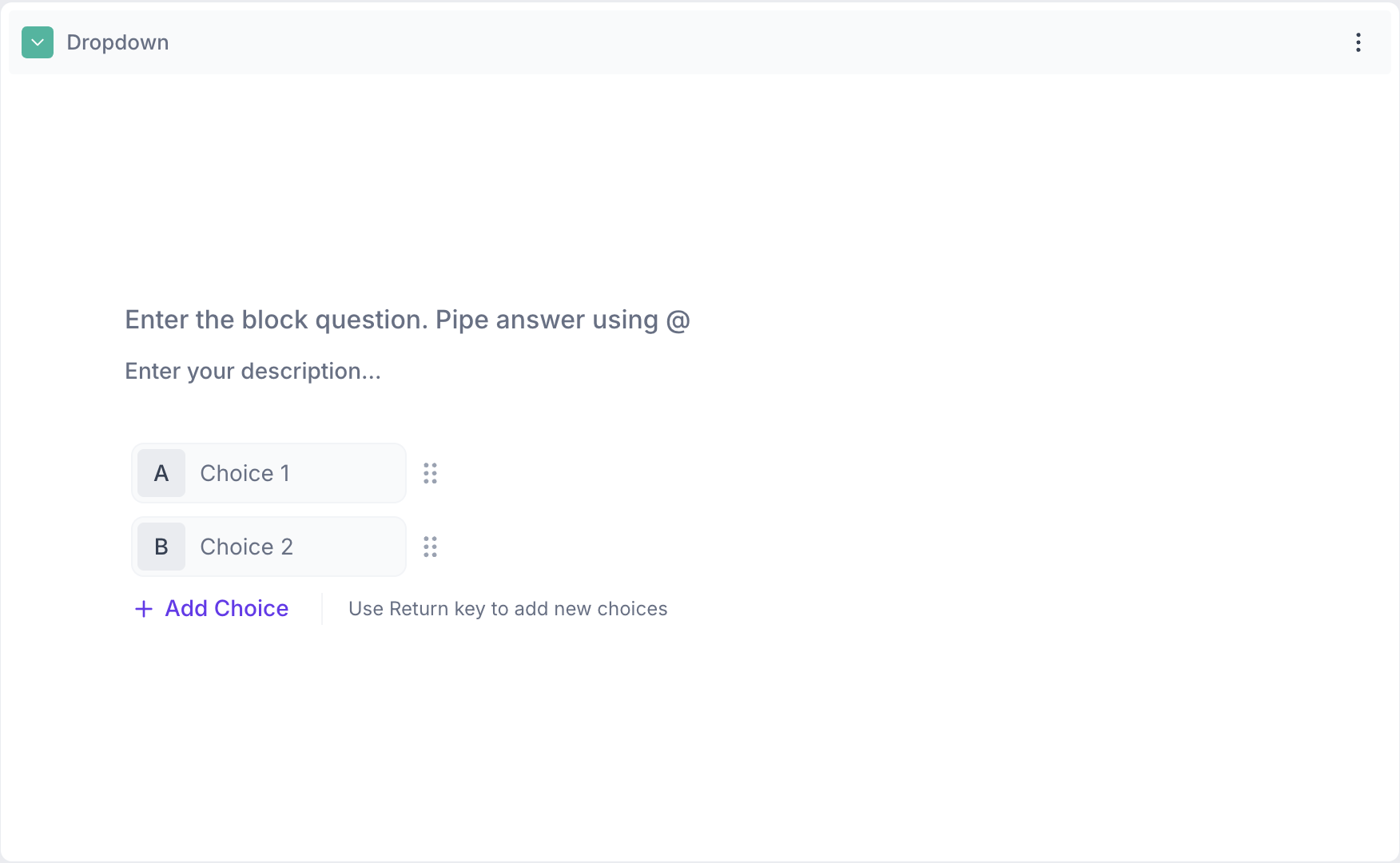
Example Use Cases :
Single Select:
- Which brand do you purchase most often?
- Where do you usually shop for this product category?
- What is your primary reason for choosing this product?
Multi-Select Enabled:
- What factors influenced your purchase decision?
- Which of the following stores have you shopped at in the last month?
- What product categories do you regularly buy from?
4. Likert Scale 🔢: This question type involves respondents rating a particular product, service, or experience on a numerical scale. In consumer research, Likert scale questions are commonly used to understand preferences, satisfaction, or perceptions.
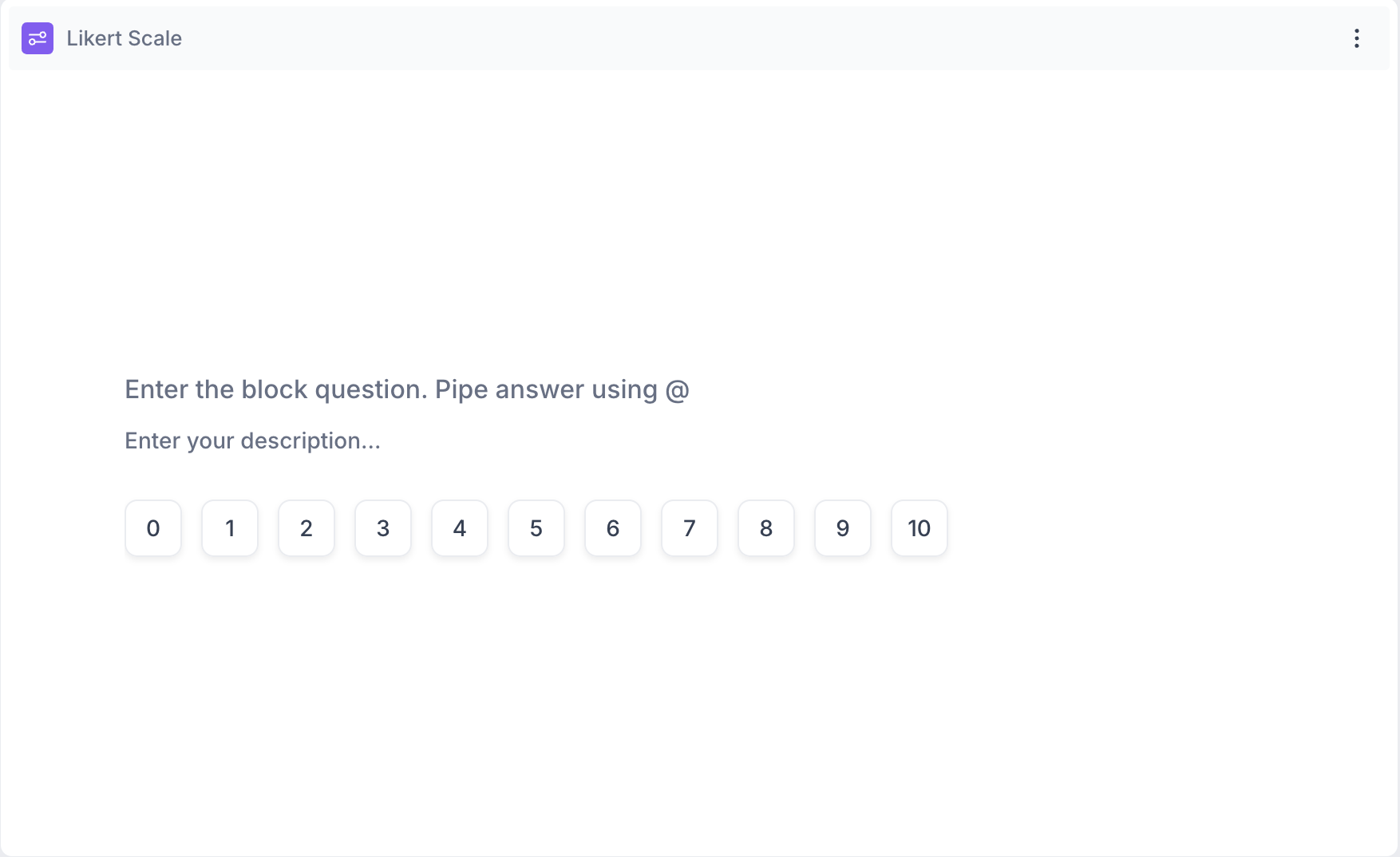
Example Use Cases:
- How satisfied are you with the product quality?
- How likely are you to recommend this brand?
- How strongly do you agree with the statement: “This product is worth the price”?
5. Thumb Up/Down 👍👎 : In this question type, respondents indicate whether they like or dislike an item by selecting a thumbs-up or thumbs-down icon. This question type is commonly used in consumer research to understand product appeal, interest, or preferences.
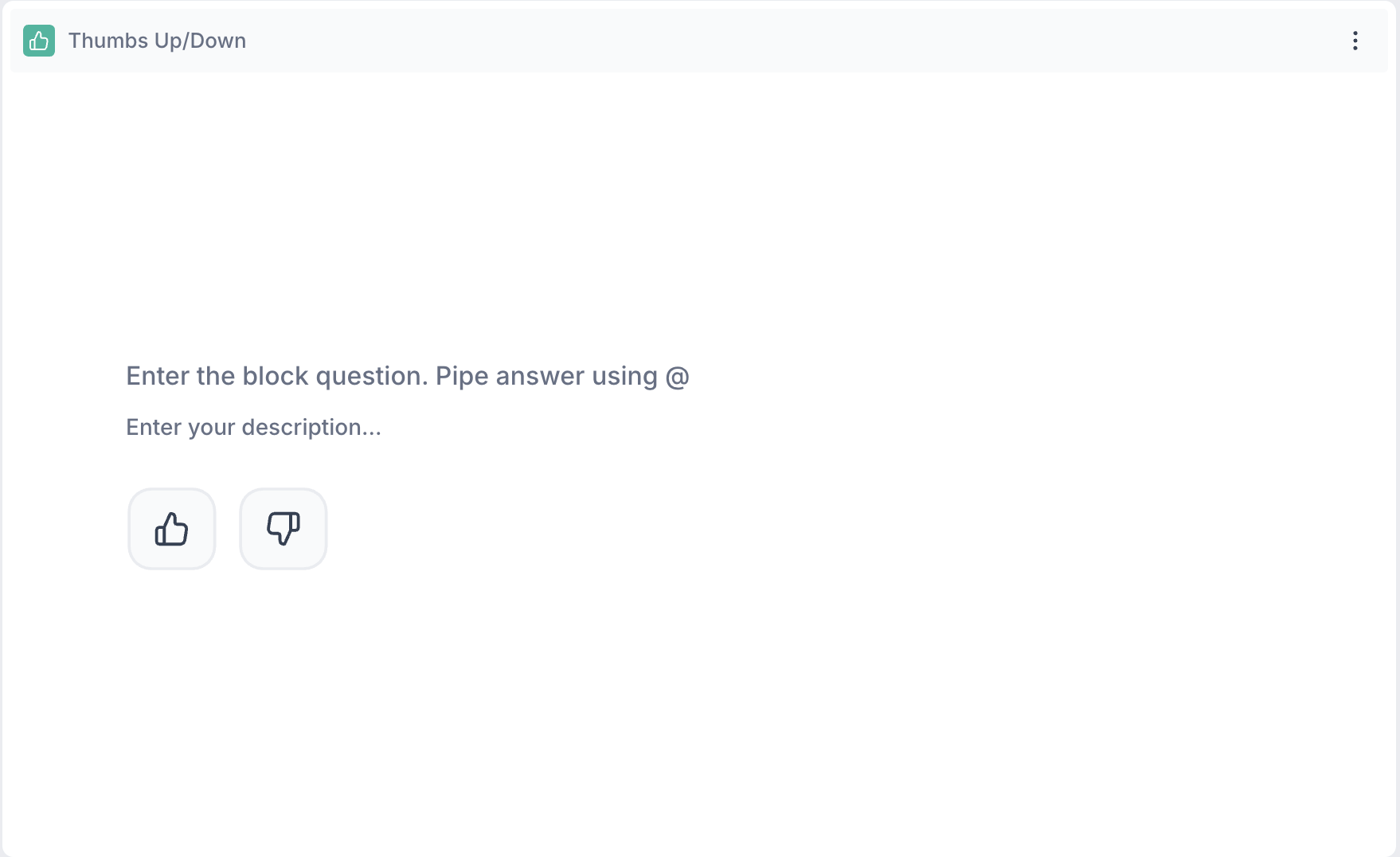
Example Use Cases:
- Did you like the packaging design?
- Do you find this ad appealing?
- Would you consider purchasing this product again?
6. Multiple Choice Question ✅: This is a multiple choice question type where respondents can select one or more options from a predefined list, based on how the question is configured. By default, only one option can be selected (single-select), but multi-select can be enabled through the question’s properties. This question type is commonly used in consumer research to capture preferences, behaviors, or opinions.
Example Use Cases:
Single Select:
- What is your preferred flavor of this product?
- How did you hear about this brand?
- Which price range best fits the product you purchased?
Multi-Select Enabled:
- Which features do you use regularly?
- What influenced your decision to buy this product?
- Which brands have you purchased in the past 3 months?
7. Ranking 📊: In this question type, respondents rank a list of items based on their preference, importance, or relevance. Ranking can be done by either dragging and dropping the items into order or by selecting ranks from a dropdown menu. This type is commonly used in consumer research to identify product preferences, purchase priorities, or key decision drivers.
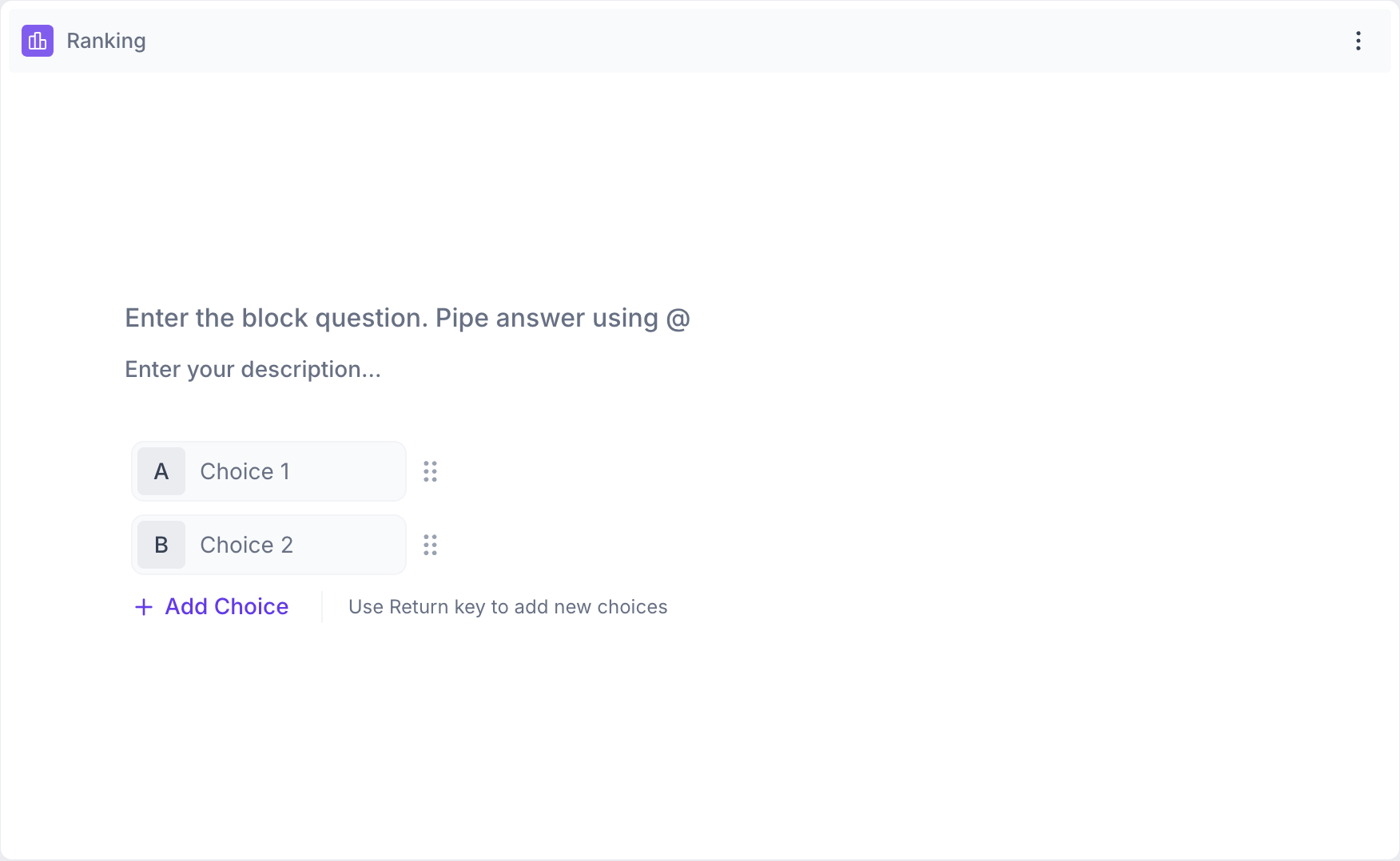
Example Use Cases:
- Rank the following features based on importance.
- Rank these brands in order of preference.
- Order the purchase drivers from most to least important.
8. Smiley Rating 😊: In this question type, respondents provide feedback using a 5-point smiley rating scale. Each smiley represents a level of sentiment, ranging from negative to positive. This format is commonly used in consumer research to measure emotional reactions, satisfaction, or overall sentiment in a quick and visual way.
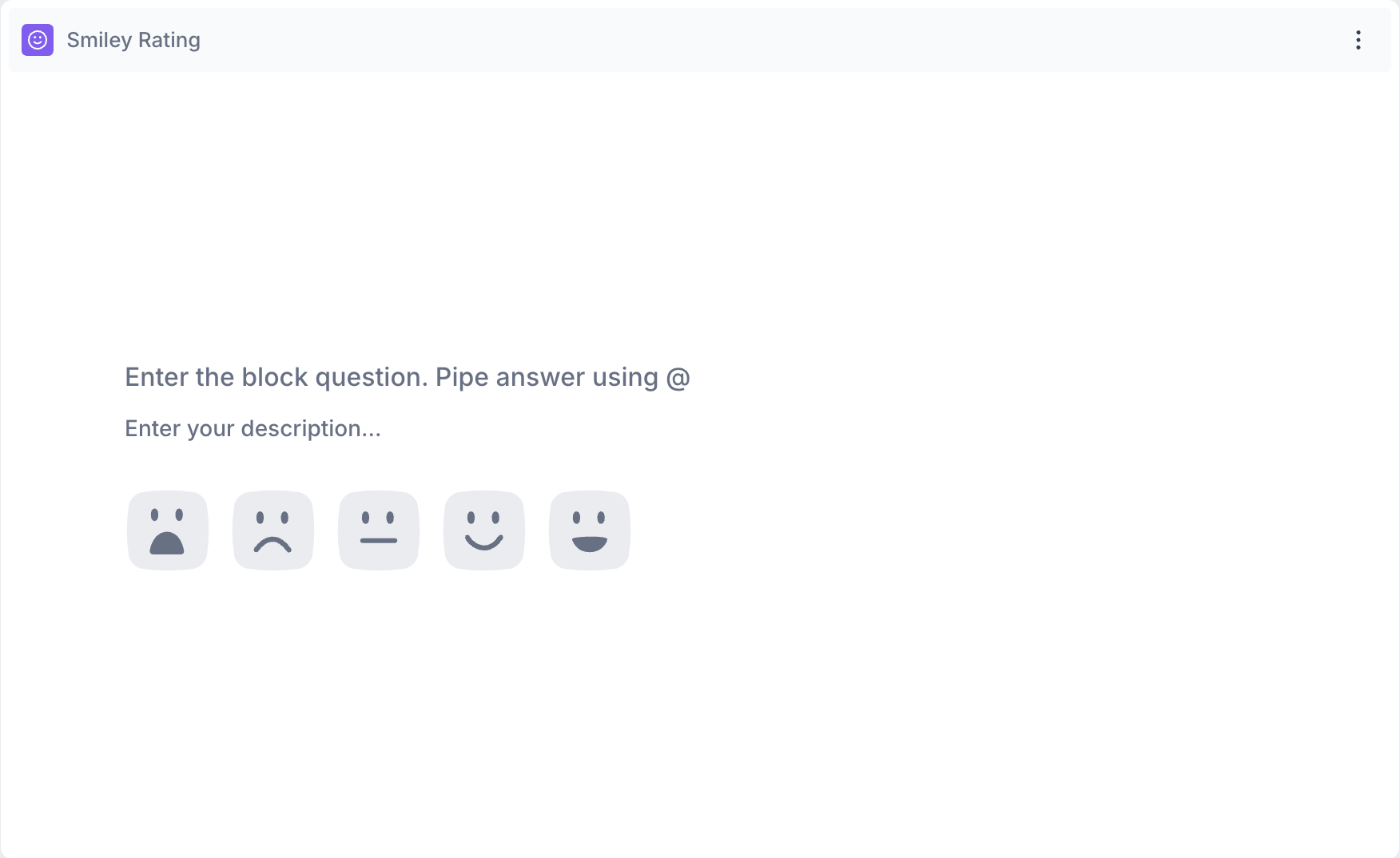
Example Use Cases:
- How do you feel about the new product design?
- How satisfied are you with your shopping experience?
- What is your emotional reaction to this advertisement?
9. Star Rating Question ⭐: In this question type, respondents provide a rating by selecting stars in the answer block, typically up to 5 stars. This format is commonly used in consumer research to measure satisfaction, perceived quality, or overall experience with a product or service.
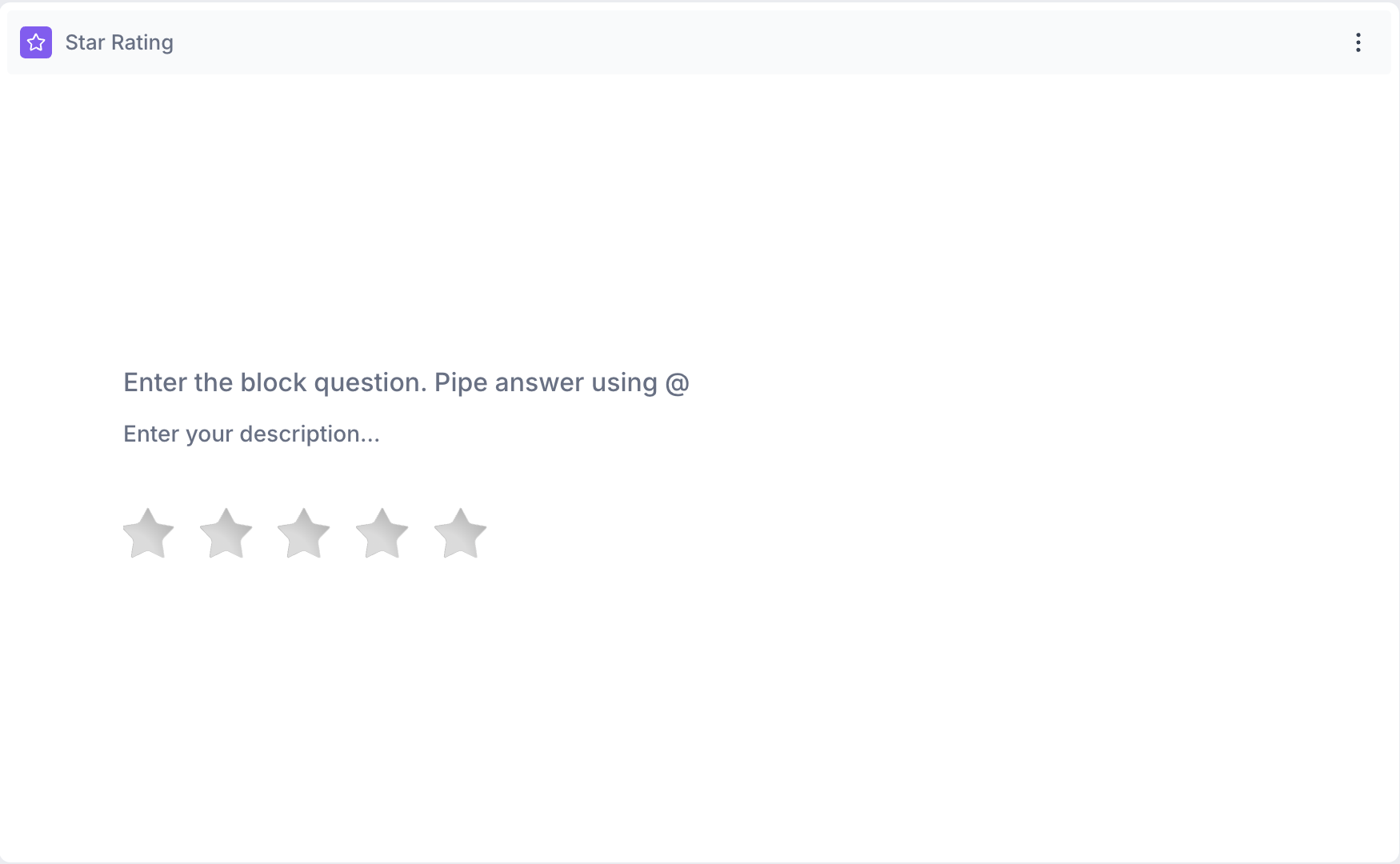
Example Use Cases:
- Please rate your satisfaction with the product.
- How would you rate the value for money?
- How would you rate the overall experience?
10. Text Response Question 📝: In this question type, respondents can enter a written response in a text box, with a character limit of up to 500 characters. It is commonly used in consumer research to collect open-ended feedback, opinions, or comments in the respondent’s own words.
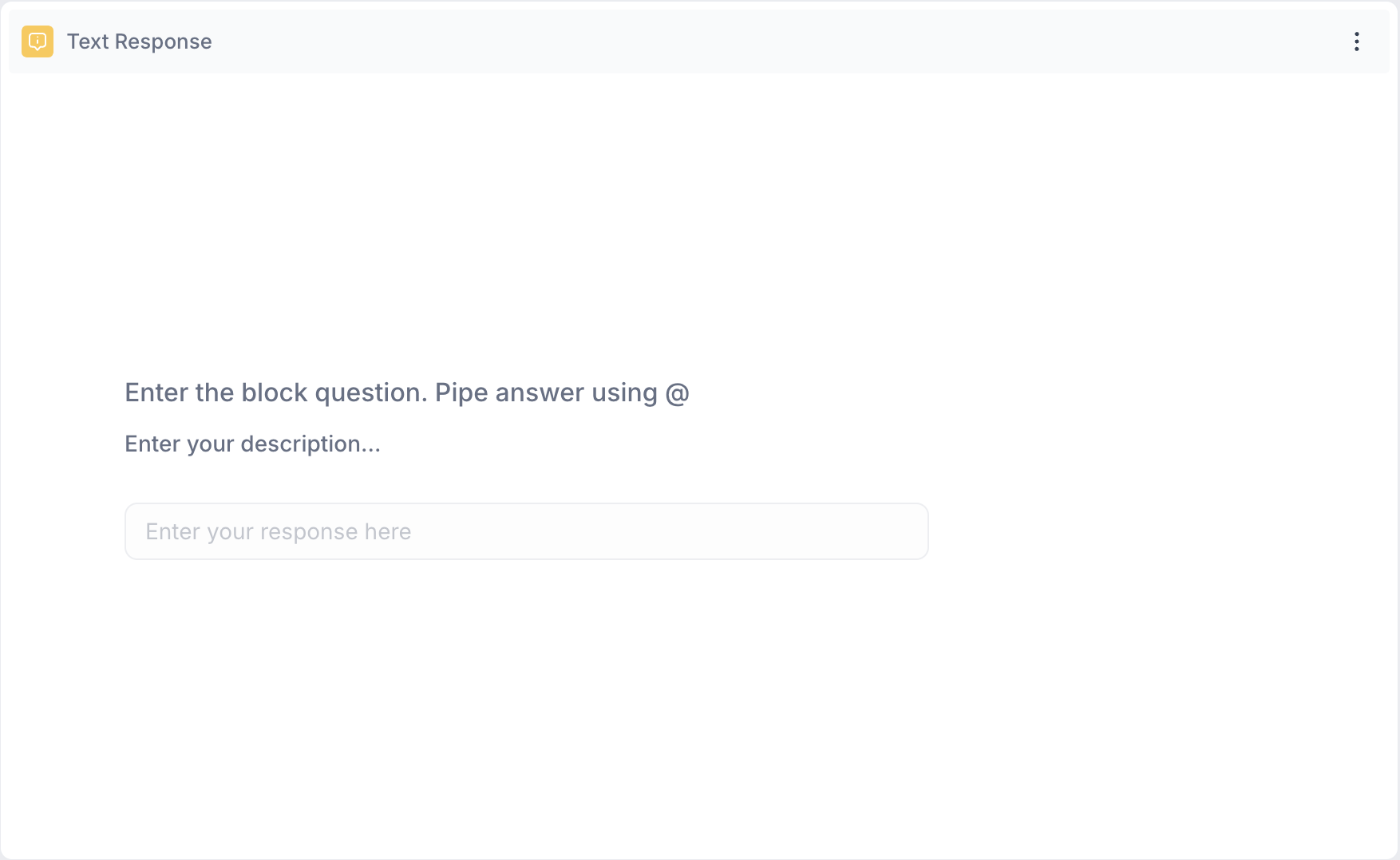
Example Use Cases:
- What did you like most about the product?
- Do you have any suggestions for improvement?
- Why did you choose this brand over others?

